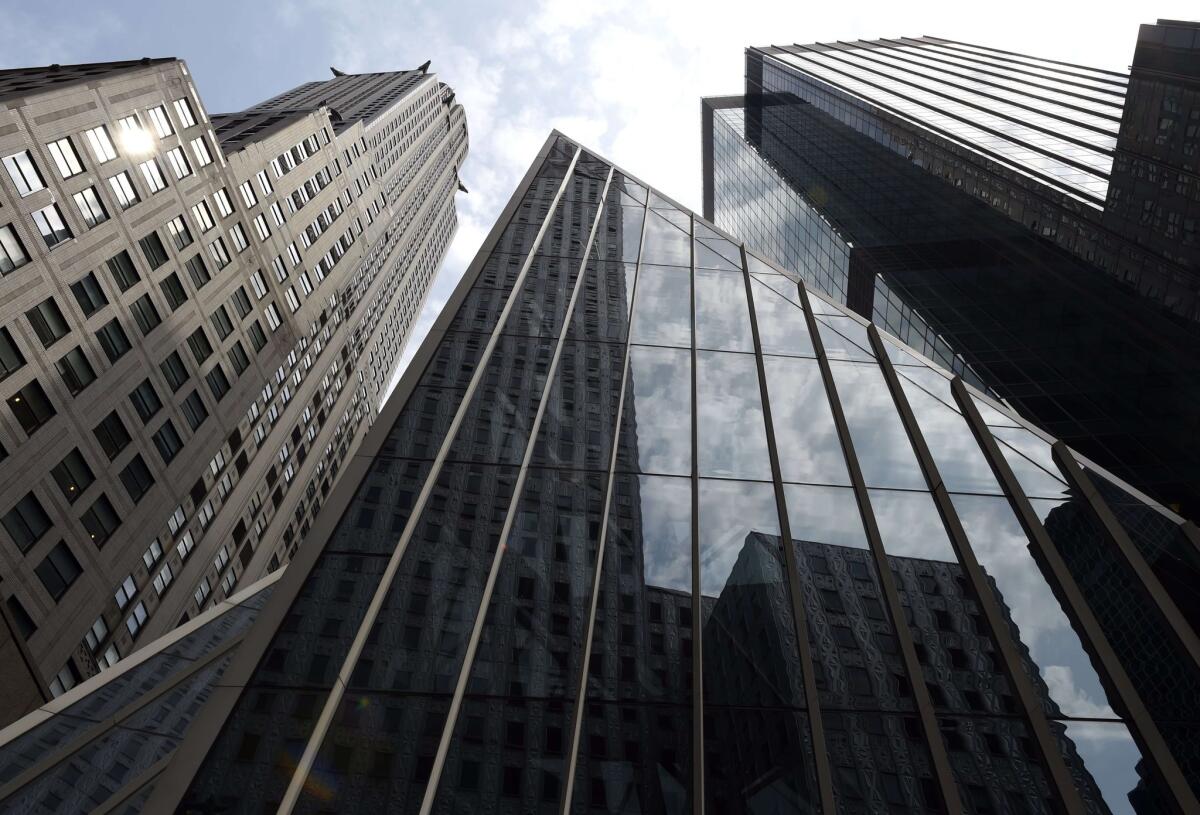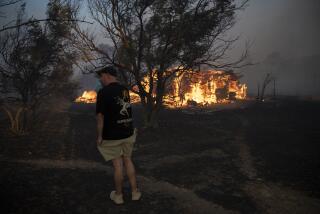Smooth surfaces help make cities into sizzling urban heat islands

- Share via
Nineteen years ago this month, Chicago experienced one of the worst heat waves in its history. Nearly 500 people, mostly poor and elderly residents of the city’s dense urban core, perished in sweltering temperatures and oppressive humidity.
The National Weather Service later determined that Chicago itself was partly to blame: The city’s man-made structures and surfaces created a microclimate that amplified the heat wave to lethal highs.
Scientists have recognized this so-called Urban Heat Island effect for more than 200 years, but they have struggled to fully explain it. Now researchers have identified an important but seemingly innocuous factor: the differences in how well smooth city surfaces and natural landscapes shed heat to the atmosphere.
Smoothness may be a factor in why different cities experience different degrees of urban warming, the scientists say in a study published Wednesday in the journal Nature.
The Urban Heat Island, or UHI, effect is a fundamentally relative concept. In scientific terms, it is just the difference in temperature between the city and its surroundings. That means any process that warms urban environments, and any process that normally cools undeveloped areas, will intensify the UHI effect by increasing the contrast between places in and outside the city.
Traditional culprits in adding warmth to cities include the dark, sunlight-absorbing surfaces of urban landscapes; the heat emitted by buildings, factories and cars; and the heat stored and radiated by the city’s concrete bulk. It also doesn’t help that cities don’t retain moisture well.
Evaporation from leaves, wet soils, and standing water cools natural surfaces the way sweat cools our skin, by consuming energy to convert liquid water into gas. But without an ample water supply, urban landscapes can’t benefit from evaporative cooling. Over the years, many scientists have pointed to this as the primary explanation of why cities consistently out-warm the countryside.
In the new study, scientists looked at 65 cities across the United States to determine how various processes contributed to urban warming. They used satellite data to quantify the magnitude of the heat island effect by calculating the difference between urban and nearby rural temperatures.
“The conventional thinking is that if two cities are identical, they should have identical Urban Heat Island effects,” said Xuhui Lee, a meteorologist at Yale University and an author of the study. But their results revealed a strikingly different story. The severity of the UHI effect varied with how much rain each city received every year.
For example, a typical wet city like Raleigh, N.C., experienced average daytime temperatures 7 degrees higher than those in the surrounding countryside. Meanwhile, a typical dry city like Las Vegas felt just a few degrees of extra heat at high noon. (At night, both wet and dry climate cities exhibited comparable levels of urban warming — about 4 degrees — which came from heat stored by buildings during the day.)
These observations alone could not explain why wet cities heated up more than dry ones. So the researchers used a climate model to tease apart causes and effects.
To their surprise, the thing that best explained why UHI effects in wet cities exceeded those in dry ones was the smoothness of the city relative to its surroundings.
“When you look at a city landscape, it is rough — there are tall buildings,” Lee said. “But if you look at city structure carefully, building surfaces and pavement are actually quite smooth,” especially compared with natural surfaces like trees and rocks, he said. On a fine scale, smooth surfaces damp air turbulence, which helps dissipate heat by moving warm air away from the surface and bringing fresh, cooler air in to absorb more.
It turns out that all of the cities were about equally smooth. However, the scientists found that the smoothness of the surrounding countryside differed dramatically from place to place.
In wet climates, cities often fade into forest-covered land, where the rough canopy of trees does an excellent job of creating small-scale air turbulence and getting rid of heat. Because they do this much better than concrete and rooftops, they increase the UHI effect.
But in dry climates, cities rise out of the flat desert, a vast sea of low shrubs and bare soil.
“The surrounding desert is actually smoother than the typical urban landscape,” Lee said. This helps cool the city, although not enough to counteract all the other urban warming effects.
While the idea of an “urban heat sink” is not new, the explanation is.
“There is some contradiction with studies in arid areas like Phoenix,” said Daniel Li, a climate modeler at Princeton who was not involved in the study. Other researchers have suggested that dry cities have a smaller heat island effect because they contain more water than the surrounding desert thanks to irrigation, or because the barren desert warms faster than the multilayered city, he said.
Still, the study presents several reasons to worry about the future, scientists said.
Heat waves are already the most deadly type of natural disaster in the U.S., killing more people each year than tornadoes, hurricanes and floods, according to the national Centers for Disease Control and Prevention. And climate models suggest heat waves will grow more severe and more frequent as the planet warms.
In addition, as the world becomes more urban, more people stand to suffer. Today, more than half the world’s population lives in cities, and more arrive every day, Lee said.
Redesigning cities to counter the UHI effect is important, but it won’t be easy, Lee said. Since it’s not practical to change the smoothness of city structures like skyscrapers and sidewalks, cities should strive to find ways of absorbing less sunlight, he said.
“A great example is the city of Chicago,” which has stepped up such efforts since the 1995 heat wave, Lee said. The city planted more trees and encouraged residents and builders to install cool roofs, those with a white or reflective coating that bounce more sunlight back to space. “That’s sort of what we are thinking of,” he said, “the chance to color the urban landscape.”
For all things science, follow me @ScienceJulia







